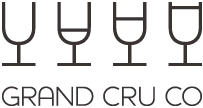Breakthrough may save Cabernet Sauvignon from climate change
Landmark research paves way to full genome map of Cabernet Sauvignon that could help winemakers battle a changing climate, writes Amanda Barnes after speaking to UC Davis researchers in California.
UC Davis revealed the first draft of the genome of Cabernet Sauvignon, and researchers are now working on reconstructing the complete 19 chromosomes of the genome and assigning functions to genes within it.
The draft genome was generated using cutting-edge sequencing technology and a novel computer algorithm and was the result of a collaborative effort between plant geneticist Dario Cantù in the Department of Viticulture and Enology and Pacific Biosciences, a California company specialised in DNA sequencing. It is a significant breakthrough nearly a decade after the Vitis Vinifera common grapevine genome was first sequenced in 2007.
‘The overall goal is to understand the genetic makeup of wine grape varieties,’ said Cantù. ‘We know that different varieties result in wines with distinct flavours and aromas, our objective is to determine what genes are responsible for the unique characteristics of each variety.’
As well as decoding the DNA of the world’s most popular red variety, Cantù believes it could revolutionise the way we breed varieties in the future and give birth to a new generation of grape varieties better suited for climate change.
‘This information will help guide breeding efforts to generate new varieties that have novel combination of flavour and aromas, but also are better adapted to worsening climatic conditions, particularly those high-quality viticulture sites that will soon become less favourable because of increasing temperature and drought.’
Drought has been focusing minds in California, where winemakers part-fund UC Davis work.
The complete, annotated genome sequencing for Cabernet Sauvignon will take two more years to complete. However this research will make decoding other varieties in the future quicker and more cost effective.
‘We started applying similar approaches to other important varieties to understand the genetic features that characterise them,’ said Cantù. ‘It’s reasonable to say that we can now generate a high-quality draft of a grape genome for around US $60,000 in about a year.’
New system claims best protection yet against wine fraud
Counterfeit wine expert Maureen Downey is set to launch a new system to combat the growing issue of wine fraud.
In partnership with diamond-certifiers Everledger, the Chai Wine Vault system promises to secure wine’s provenance and authenticity by storing it in a digital ledger that uses a ‘blockchain’ system – essentially a database where each record is marked with a timestamp and can not altered once it is sealed. It is the format used by bitcoins and other cyber currencies.
Fine wine forgery – highlighted in the recent film Sour Grapes – is hard to quantify by its nature but has been increasingly in the public spotlight following the trial and conviction of Rudy Kurniawan in the US in 2013.
To authenticate a bottle of wine, the Chai Method collects over 90 data points with high resolution photography and records of a bottle’s ownership and storage. It uses this information to create a digital thumbprint that forms the ‘blocks’ of the database.
This then travels with the wine, being updated as the bottle changes hands. Licensed retailers, warehouses, auction houses and other sale platforms can link to the bottle’s digital identity to verify provenance.
‘Many of the single layer, high tech solutions to combatting wine fraud such as RFID chips and Prooftags are either failing (in some instances by peeling off), or will be counterfeited themselves in the future and can possibly be used to substantiate counterfeits,’ Downey continued.
‘Until this system, authentication has had to be repeated every time a bottle was offered, because there has been no way to assure that it is the same as that previously inspected’.
Mas de Daumas Gassac reports rush on 2015 wine
High expectations for the 2015 vintage across southern France have seen one of the most prestigious estates, Mas de Daumas Gassac in Languedoc, sell all of its top red wine within six weeks.
Merchants and clients have hoovered up all 8,500 cases the Daumas Gassac 2015 red wine on pre-release in near record time, the estate said.
‘It came to a point few weeks ago where we had more orders than wines,’ said Basile Guibert, second generation co-owner and head of sales in Asia.
His brother, Samuel, co-owner and winemaker, said the estate had only seen something similar with the 2000 and 2009 vintages at the estate.
‘We had to drastically reduce allocations [of 2015] to meet everyone expectations,’ he added. The strong demand reflects ongoing confidence in a 2015 vintage that drew excitement in many French wine regions; in stark contrast to what some have seen this year.
Daumas Gassac production for its signature Vins de Pays de l’Herault red 2015 was around average for the past few years, at 107,000 bottles, according to Daumas Gassac technical sheets. UK merchants Goedhuis and Majestic-owned Lay & Wheeler were selling Daumas Gassac 2015 red on pre-release at £120 for six bottles in bond. That makes it roughly the same price as the 2009 vintage now.




